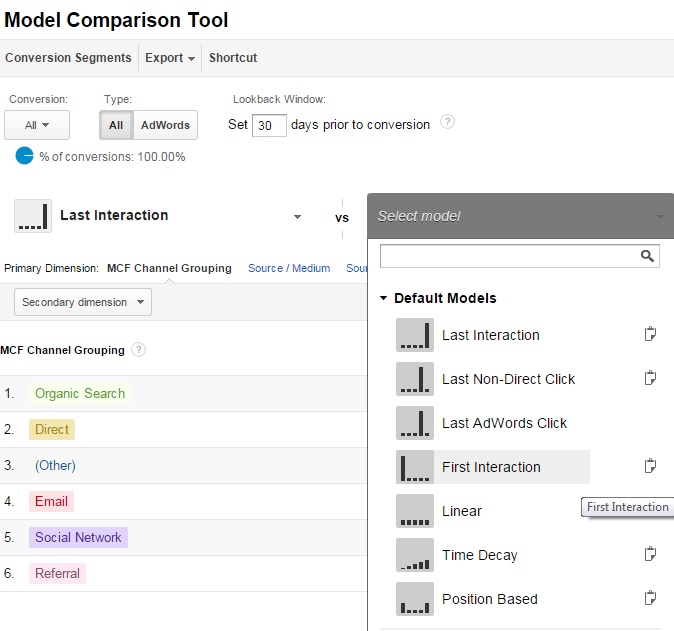To many, measuring the success of content marketing can be a challenge. Never more so than if you are trying to report to a board of directors or the CEO on the performance of your content driven efforts. The solution to this, often lies in knowing where to look!
Jonathan Blank, a director at NewsCred, recently did a post over at Marketing Land on some basic Google Analytics metrics for content marketers.
Before I shed some light on some of the points in the post, I just want to state a disagreement (sorry Jonathan!) with his first point of not using traffic to your content hub as a metric as only a small portion of this traffic will carry out one of your conversion goals.
If your content marketing efforts are not effective at driving productive traffic to your site then why do it? Yes only a small portion will “convert” right away but that is why you need to focus on other metrics for this traffic which you’re about to find out in just a moment.
My main point here is, and sorry to Jonathan if this is what you meant, that you should look at:
“How effective your content marketing strategy is at driving traffic to the site, but in conjunction with the conversion metrics detailed below. This is so you know how productive this traffic is… or if you need to work on your content, your website, or both in order to improve your results.”
Now let’s look at how to measure the effectiveness of your content marketing strategy.
The main points of the post are:
- Track micro and macro conversions – this means as well as tracking conversions, don’t forget to track form fills, clicks through to a product/service page, video views etc. Whatever applies to your site.
- Look at assisted conversions not just last click – so look to see if your content marketing played a part in the eventual conversion as oppose to the last page or channel that resulted in the conversion.
Let’s dig a little deeper…
Track micro conversions
Every piece of content you create should be strategic.
What I mean by that is every piece of content should talk to the interests (no selling) of your target market but in a way that relates to your products and services.
So if every piece of content relates to an offer in some way, you should be driving this traffic further towards conversion.
For example, this could be a call to action taking them to a product page or a call to action asking them to opt in to get more content about the topic or a free trial etc.
Measure these metrics! Micro conversions!
This will tell you how effectively you are converting traffic into prospects. You will find out which topics and post types are better at doing this and segment, segment, segment!
Look at what ages, genders, locations are the best and worst performing and look at what types of posts and topics are better at driving visitors closer to conversion and which segments are not engaged and bounce.
Do more of what works and keep testing to refine your funnel. Test your calls to action, your opt in offers, headlines, positions of native ads in your content… test everything!
The most important one that will really help you prove to your CEO that your content marketing efforts are contributing to the revenue growth of the business is…
Tracking Assisted Conversions
Another post on the Reef blog back in February also touched on this subject and explained how to set up channel groupings and looked at user flows (where people go after landing on a post) and attribution.
Really useful stuff that you should definitely take 5 to scan through after reading this post. You can read it here: 4 Analytics Tips For Content Marketing
For this post I’m going to show you one way to measure how well your content marketing strategy is working and if it is contributing to conversions and revenue.
Last Click Vs First Click
Log in Google Analytics and go to Conversions -> Attribution -> Model Comparison then choose last vs first interaction and organic as the channel (or any other channel you want but we will look at SEO for this post).
Next choose conversions and value.
Then look at the data.
If first interaction attribution is higher than last interaction attribution, then it means that your content marketing/SEO is working and directly leading to conversions.
It is driving people to your site and brand and these people are then converting at a later stage having already been exposed to you.
Your content marketing is driving prospects to your website and engaging them in the upper funnel when they are researching and becoming familiar with brands and many of these people are later turning into customers.
Looking at:
- Last interaction vs first interaction
- Attributed conversions from your content hub and
- Measuring micro conversions
…can really help you determine if your content marketing is working. If your metrics don’t stack up… you’ve got some work to do!
Let me know in the comments if you need any help with anything or have any questions and I’ll be happy to help!
*image credit 10ch of Flickr


